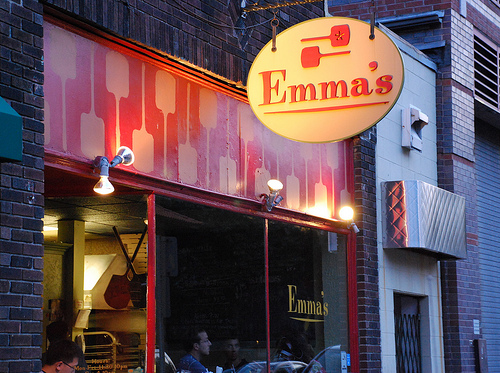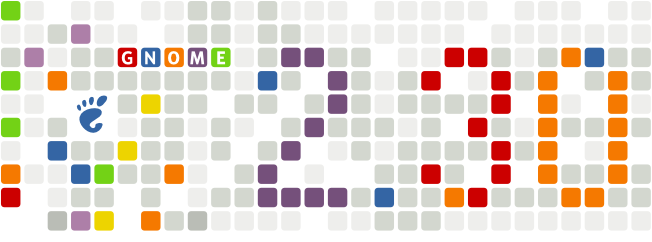Yesterday was the first day of the GSettings Hackfest! Ryan, Matthias, Colin, David and I were locked in a meeting room for the whole day (okay, we went out for lunch and Matthias had to leave afterwards) and we put our brains to good use. Or at least, that's the feeling I got ;-) But first, let me thank the various companies who are helping this hackfest: Novell is sponsoring and hosting it, and Red Hat and Codethink are sending folks here. This hackfest will most certainly make a difference on our road to GNOME 3.0, and the support of those companies is a great contribution! And obviously, without the Foundation support, the event wouldn't have been possible, so here's lots of love from the participants to the Foundation too :-)
We spent the morning planning and discussing various topics, and the afternoon was more like a coding session. Unfortunately, we didn't take any fancy picture, but we'll try to do a better job now. Matthias put some notes online, and here's my attempt to summarize the day (with probably a few errors here and there...).

Emma's Pizza by afagen (Creative Commons by-nc-sa)
Overview
Ryan gave a general overview of GVariant/GSettings/dconf. Here's a quick summary:
- GVariant is the part that landed in glib 2.24 (released at the same time as GNOME 2.30). It's a datatype for values of a type that you specify, and which can be simple, or relatively complex (something with a mix of arrays, tuples, dictionaries, strings and integers, for example).
- GSettings is an API to access settings. This is the main focus in this hackfest.
- dconf is what will store the settings on the disk, and it's a backend for GSettings. So it's actually only an implementation detail; there's also a simple memory-based backend that makes it easy to test GSettings without dconf.
- There's also a GObject serializer that exists in a branch, but it needs to be reviewed and it's not something that is blocking anything major.
So what's important in there for developers? The GSettings API is what you should care about, and it's relatively straight-forward:
/* Get settings associated with the org.gnome.hello schema. We now specify
* directly which schema we want, instead of just a path like in gconf. */
settings = g_settings_new ("org.gnome.hello");
/* Fetch a tuple of integer that are stored together (instead of using two
* distinct keys, like in gconf). */
g_settings_get (settings, "preferred_size", "(ii)", &width, &height);
/* Set a string-typed key. */
g_settings_set (settings, "username", "s", "Rupert");
/* Bind a setting to an object property. */
g_settings_bind (settings, "show_picture", image, "visible", G_SETTINGS_BIND_DEFAULT);
There are already two modules with a gsettings branches: devhelp and gedit. While they probably won't work straight away with the final GSettings, it certainly helps get a better view of what porting involves. Unfortunately, a few things need to be completed before GSettings is usable again, which makes it not really fun to do some port right now. But things should be better really soon now.
For distributors and sysadmins, knowing a bit about dconf will still be important since this is where the settings will be stored, and this is the part the will be used to implement non-schemas default values or mandatory values.
Timeline
We obviously discussed planning, and one explicit goal that was set is to merge GSettings in glib at the end of the week. We'll see how it goes, but that's definitely doable since it's not that big.
There's the question of whether all of GNOME can be ported to GSettings in time for GNOME 3. I do hope it will happen, but we'll certainly know more at the end of the week once we've started porting applications using gconf in interesting ways.
Schemas
While there's already support for schemas, it's not set in stone yet and it can be improved in various ways. Among the things we discussed:
- The current format is a really simple format that is easy to write and parse for human eyes, but it's not flexible enough to do everything we need. So we worked on a complete XML format, which is still relatively intuitive. However, we expect to make it possible for developers to use the simple format and compile it to a XML file with a small utility during the build.
- The schemas are compiled in a database, that will only contain the default values and potential constraints about the values for a key. So if an application wants to access the description of a key (which is the exception, not the usual case), it will have to parse the XML files for this.
- Translations of the descriptions will be fetched with gettext, since they will already be in the .mo files and there's no need to duplicate this information.
- How to handle localized default values. This is useful for various settings (clock format, default search engine, etc.), so it's definitely something we want to have. Application developers will have to explicitly mark a key as localizable. We're still debating whether all types of settings should be localizable, or if it's only strings. So don't hesitate to share with us good concrete example of non-string settings that should have a localized default value!
While there are still open questions, we made good progress on this, which will enable us to move to other topics quickly.
Configuration Migration
Migration of configuration is a tough topic, and we're unsure what's the best approach here. We quickly brainstormed about some possibilities:
- An easy solution would be to just do nothing. It might look brutal at first, but the gconf schemas that are defined by applications today are often suboptimal in various ways, and maintainers wouldn't be unhappy to be able to change a few things here and there. Also moving to GNOME 3 can be seen as an opportunity to do a clean break. But we already know that this would be annoying for users.
- The other extreme solution is to migrate all the gconf database at once. The issue with this, though, is that it assumes that applications stop using gconf at the same time, which is not going to happen: we don't have control over all the applications that are used by users. So a user might change the settings of an gconf-based application after the migration has been done, and those changes will never get migrated, even if the applications gets ported later.
- An approach where it's up to each application to signal when to migrate its data (and maybe even which part of the data to migrate, with a file mapping gconf keys to GSettings keys) is a third alternative. It looks relatively attractive, but it also has a simple issue: what happens to the shared settings, like everything living under /desktop/gnome?
So no obvious magic solution (surprise!), and we clearly need to think more about it this week.
Best Practices
It's a topic that came up more than once. We certainly need to define some best practices on how to write schemas (how to name keys, what should be in the description, etc.) and as to when to use GSettings. For the schemas best practices, we can certainly look at what is recommended for gconf, although there are requests to change a few things (prefer dash to underscore, for example).
When to use GSettings is a fun topic: it's really something that should be used to store settings, and not state. So the position of a window, for example, would not be appropriate to store in GSettings. However, without a good API to store transient data, it's likely that GSettings will get abused for this like gconf is being abused. And it seems we don't all agree on what is a setting and what is transient data: having an expander open is an interesting case where Ryan and I are happy to disagree :-)
D-Bus discussion
Hrm, okay, I didn't listen too much to that part of the discussion, so I have nothing really interesting to write about it. But with Colin (who doesn't admit yet he maintains D-Bus) and David (who's writing gdbus) together, there was probably insightful opinions :-) The good news is that gdbus should be ready soon, and I heard some talks about porting gvfs to it...
Hacking
So as you can see, there were a good number of topics discussed. But we slowly turned to our editors after lunch: David focused on gdbus; Ryan worked on GHashFile, an API to store data on disk, which will be used by dconf; Colin progressed on GtkApplication; I did some stupid work to save GSettings stored in the memory backend to keyfiles.
So what happens today? We'll see when the hackfest begins, but it looks like we'll be able to use GSettings again, at least with the memory backend, which will make it easier to review the GSettings branch and start porting applications.




Last Comments